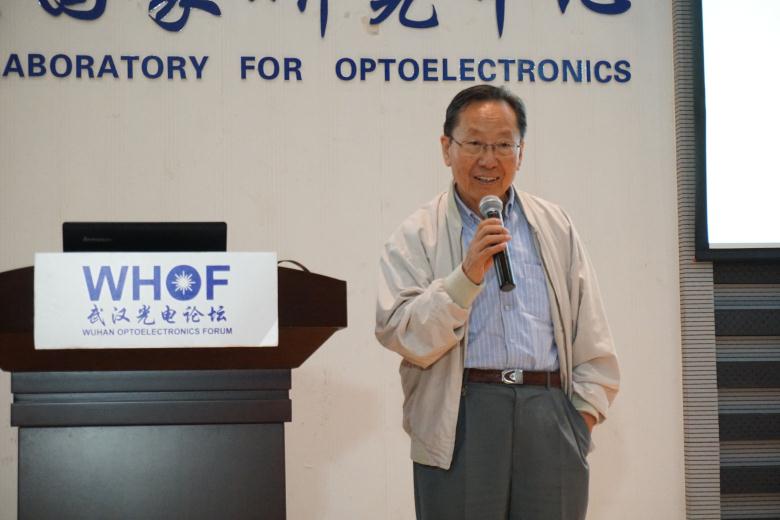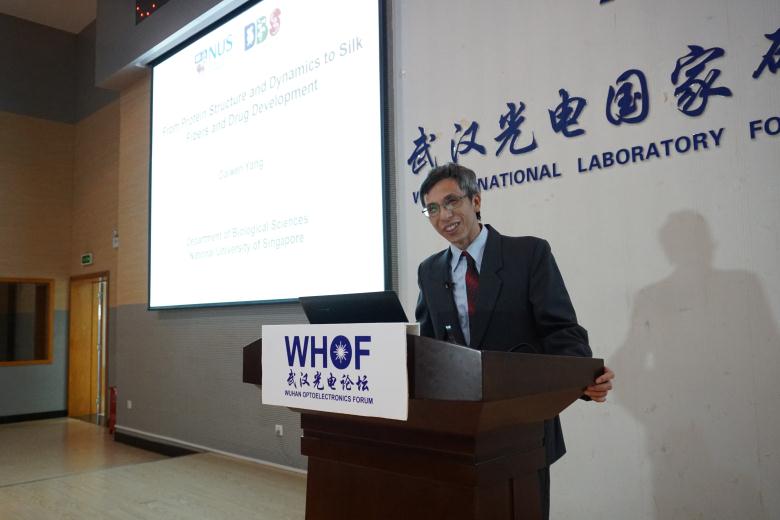WUHAN, China (May 29, 2019) - Wuhan Optoelectronics Forum No. 157 was successfully held in Auditorium A101 at Wuhan National Laboratory for Optoelectronics (WNLO) in the morning of May 29. Prof. Yang Daiwen from NUS delivered an exciting talk entitled From Protein Structure and Dynamics to Silk Fibers and Drug Development. Academician Chaohui Ye, from WNLO chaired the forum. Prof. Dan Zhu, Deputy Director of WNLO, awarded Prof. Yang Daiwen the forum medal.
Proteins are biopolymers made of amino acids. They perform a variety of functions within organisms, and some proteins can assemble to form fibers such as silkworm silk and spider silk. Given the important functions, proteins have been studied intensively and recombinant proteins have wide applications in medicine (as drugs, vaccines, diagnostic reagents, and drug targets), industry (as enzymes), and bioengineering (as materials). In order to understand how proteins function and further engineer them for desired objectives, it is necessary to reveal their structure-dynamics-function relationship. In this presentation, I will show you the structures and dynamics of a number of proteins as well as their relationship to function, which were obtained using nuclear magnetic resonance (NMR) spectroscopy. Moreover, I will demonstrate how artificial silk can be produced from spider-silk-like proteins designed based on our structures, how drug lead is identified based on structural and dynamic information, and why structural information is important for protein-based vaccine design.
Yang Daiwen obtained the Ph.D. degree from Wuhan Institute of Physics and Mathematics,Chinese Academy of Sciences in 1991. After receiving postdoctoral training in Japan and Canada, he worked as a senior research associate at University of Toronto from 1997 to 2000. He joined NUS as an assistant professor in 2001 and was promoted to a tenured full professor in 2011. Professor Yang’s group focuses on researches in NMR methodology, protein structure and dynamics, production of spider silk fibers from recombinant proteins, structure-based drug design, and development of protein-based vaccines against infectious diseases.


